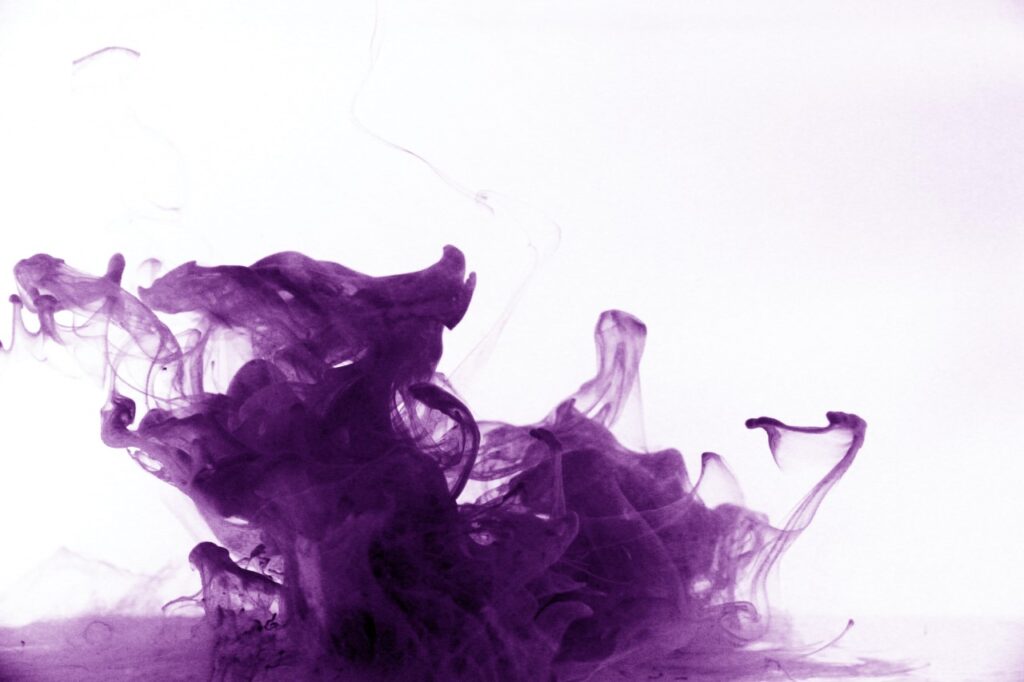 On Inauguration Day, Kamala Harris wore glorious purple. First, I heard it was for the suffragists. I smiled, thinking back to quotes I once dug up about their careful choice of color, the Americans stealing the Brits’ purple because it represented “the instinct of freedom and dignity.” I was glad they did not stick with their original all-white protest dresses. Purity may be virtuous, but it has to be protected. It hangs back, as I so often have, instead of diving into the fight.
On Inauguration Day, Kamala Harris wore glorious purple. First, I heard it was for the suffragists. I smiled, thinking back to quotes I once dug up about their careful choice of color, the Americans stealing the Brits’ purple because it represented “the instinct of freedom and dignity.” I was glad they did not stick with their original all-white protest dresses. Purity may be virtuous, but it has to be protected. It hangs back, as I so often have, instead of diving into the fight.
I lost myself in a daydream that ushered Susan B. Anthony to one of those folding chairs at the Capitol. You can just feel the triumph, the sense of a wrong righted and a job well done. Harris did not even try to hide her delighted grin as she stepped up to take the oath of office. Anthony’s smile might have been a bit more reserved—unless of course death has loosened her up—but she would have shared the elation.
I returned to reality just as a broadcast journalist murmured a correction: Harris had worn purple because “it is red and blue together,” and what could be more perfect for an administration determined to unify the country? I nodded. We have done enough splitting. We could use the meditative quiet of dyeing Easter eggs, slowly placing the fragile egg on a flimsy wire holder and lowering it into a bath of red, then of blue, then a little red again, then more blue, until the color is new, a soft violet lovelier than you thought possible. Perhaps we should pass legislation the way we dye eggs, instead of playing tug of war with it.
The symbolism worked even better than I realized, because when I tried to find out how the eye perceives purple, I learned that purple does not exist. There is no such thing as purple light; the only way we can experience purple is by seeing red and blue simultaneously. We have cones as receptors for red, blue, and green, and we can see yellow halfway between red and green, but halfway between red and blue, we see green. (Which makes no sense to me, but neither does much of our political system.)
Apt though the red-plus-blue metaphor is, though, it, too, was wrong. After the ceremony, I read my emailed newsletter from Heather Cox Richardson, the history prof who captures politics more readably and intelligently than anyone I know. She wrote that Harris “was dressed in purple in honor of Shirley Chisholm, the seven-term New York Representative who was the first Black woman elected to the United States Congress and who ran for president in 1972. Chisholm used the colors purple and yellow in her campaign, and Harris picked them up for her own presidential bid.”
I had forgotten about that campaign, because now she represented something entirely different: a series of firsts, yes, but also a spirited, determined, down-to-earth, wryly amused leadership partner for Joe Biden, a foil and check for his old-fashioned bonhomie. Still fully herself, and still wearing purple. It is a color that gets our attention—or ought to. “I think it pisses God off if you walk by the color purple in a field somewhere and don’t notice it,” Alice Walker writes.
Flamboyant yet stately, “purple combines the calm stability of blue and the fierce energy of red,” Bourn Creative tells us (though politically, they seem to have gotten it backward). “The color purple is often associated with royalty, nobility, luxury, power, and ambition. Purple also represents meanings of wealth, extravagance, creativity, wisdom, dignity, grandeur, devotion, peace, pride, mystery, independence, and magic.”
Whoa.
After centuries of art and ritual, color symbolism is so richly layered that we can pick what we like, impose our own symbolism. Maybe Harris has ascended to our version of royalty, and the purple was her robe, sans ermine trim. Maybe she was preparing for a brazen old age, as clubby women do. Or bracing to be wounded in battle. Or maybe she reminds me of my grandmother, who at eighty decided she had not lost style and bought herself a purple suede coat.
There is something wonderful and terrible about our ability to bring private meaning, or whichever historical meaning we prefer, to a shared symbol. The New York Times shorthanding it “power purple” does not capture all the nuances of that color, any more than the stars and stripes of the nation’s flag mean the same thing every time we see them. We all recite the same pledge of allegiance, but the flag means very different things to us—even before it is rendered in blue and black, or used to whack a journalist’s camera, or wrapped around the shoulders of a rioter, or burned. And you do not even know, as you read the last part of that sentence, which riot-slash-protest I am talking about.
Now that I know why Kamala Harris wore purple, I will honor her reason, grateful that it was explained it to me. That is the best we can do: reach into the vast pool of possible meanings and try to find intent.
Read more by Jeannette Cooperman here.
